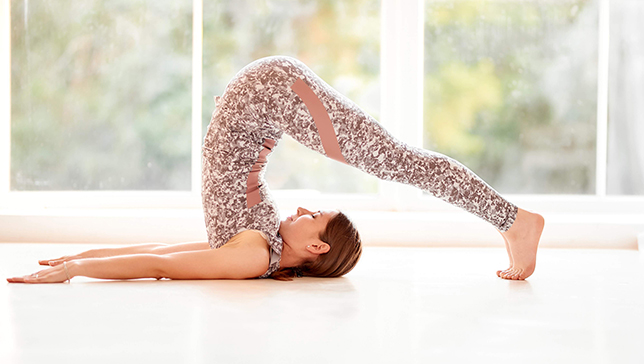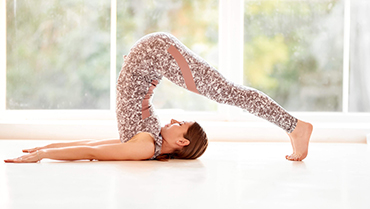Plow Pose - Halasana

Contents
Plow Pose is an inverted yoga posture that stretches the spine and shoulders while rejuvenating the nervous system. Because the pose calms and relaxes the nerves, brain, and heart, it is traditionally practiced near the end of a yoga class to help prepare the practitioner for Corpse Pose (Savasana) and meditation.
The Sanskrit name for the pose, “Halasana” (hah-LAHS-uh-nuh), comes from two words:
- “Hala” — meaning “plow”
- “Asana” — meaning “pose”
It is named after the shape of an Indian plow, which is used to cultivate the land. In practice, the pose’s soothing and revitalizing aspects prepare the landscape of your mind, body, and spirit for deep contemplation and renewal.
Pose Detail
- By Type: Flexibility Yoga Poses
- Difficulty: Intermediate
- Body Position: Inversion Yoga Poses
- By Benefit: Yoga Poses For Stress Relief
Step-by-Step Instructions
Benefits and Contraindications
Improves Digestive System
Relieves Back Pain
Relieves Stress
Helps To Manage Diabetes
Therapeutic for Leg Cramps
Improves Blood Circulation
Strengthens Immune System
Hypertension
Menstruation
Cervical instability
Vision issues (Retinal Detachment, Nearsightedness, Сataract etc)
Multiple sclerosis
Brain tumors
Epilepsy
Head injuries
Urolithiasis
Any inflammatory processes in the body
Photo poses in different angles

Modifications, Props & Tips
While performing the asana, make sure that your neck is free, the spine should not touch the floor, and the head can be freely risen above the mat.
Use a yoga strap if you can’t bring your palms together behind your back.
Frequently Asked Questions
Variations
- Legs Up To The Wall Pose
- Ear Pressure Pose
Top Preparatory Poses
Top Follow-Up Poses
- Fish Pose
- Bridge Pose
- Upward Facing Dog Pose